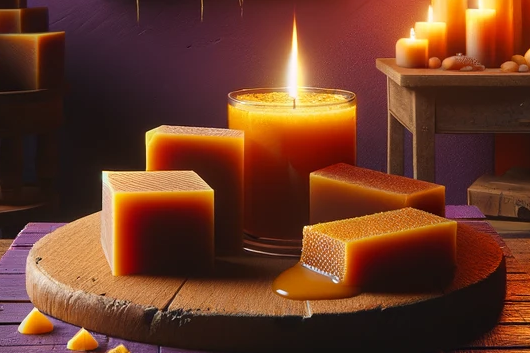Copernicia Cerifera Cera

Carnauba wax, also known as Copernicia Cerifera Cera, is a vegetable wax obtained from the leaves of the carnauba palm. This palm only grows in Brazil and is an important economic factor there. Carnauba wax has many properties that make it interesting for various applications. But what effect does it have on dogs? Is it harmful or beneficial for four-legged friends? In this article, you can find out more about the ingredient and its advantages and disadvantages for dogs.
What is Copernicia Cerifera Cera?
Copernicia Cerifera Cera is the Latin name for carnauba wax, which is obtained from the excretions of the leaves of the carnauba palm (Copernicia prunifera). The palm produces a powdery layer of wax on its leaves, which protects them from heat and drying out. This layer of wax is removed from the dried leaves by brushing, tapping or scraping and then melted and cleaned. The result is a hard, brittle and almost tasteless wax that can be yellowish, greenish or gray, depending on the degree of cleaning.
Carnauba wax has a high melting point of 80 to 87 °C and is insoluble in water, but soluble in organic solvents such as ether, benzene or alcohol. It consists of about 85 % esters of long-chain fatty acids esterified with fatty alcohols or diols. It also contains aromatic carboxylic acids such as cinnamic acid, which give the wax its characteristic odor.
Carnauba wax has been used in Europe since the 19th century and has numerous applications in the food, cosmetics and pharmaceutical industries. It is used as a coating agent, consistency agent, film former or emulsifier in various products such as chocolate, chewing gum, lipstick, creams, tablets or car wax.
How does Copernicia Cerifera Cera affect dogs?
Carnauba wax is considered harmless to humans and animals. It is indigestible and is excreted after consumption. It has no toxic or allergenic effect and can even serve as a natural protection against UV radiation.
Carnauba wax can therefore have a number of benefits for dogs if it is added in small quantities to their food or grooming. For example, it can
- make the skin supple and protect it from drying out
- make the coat shiny and protect it from matting
- clean teeth and protect against tooth decay
- promote digestion and make stools firmer
- strengthen the immune system and inhibit inflammation
However, carnauba wax should not be fed in excessive quantities, as this can lead to digestive problems such as constipation or diarrhea. Care should also be taken to ensure that the wax is not contaminated with other substances that could be harmful to dogs. For example, the wax may contain kerosenes or bleaching agents, which can damage the liver or kidneys.
Copernicia Cerifera Cera is a vegetable wax obtained from the leaves of the carnauba palm. It has many positive properties for the food, cosmetics and pharmaceutical industries. It can also be useful for dogs in small quantities to care for their skin, coat, teeth and digestion. However, it should not be overdosed.
If you notice any signs of hypersensitivity or poisoning in your dog, you should see your vet immediately. We are not a substitute for a vet, but we try to be as accurate as possible. Every dog reacts differently and we recommend you get a second opinion or consult your vet if in doubt.
Stay healthy and take good care of your four-legged friend!😊
Similar to Copernicia Cerifera Cera
Paw wax is a product designed to protect and care for dogs' paws. Dogs' paws are very sensitive and can be damaged by various factors, such as Irritating substances such as road salt, fertilizers...
Beeswax is the secretion of four pairs of wax glands on the abdomen of bees. The bees chew the wax softly and use it to form the hexagonal cells of their honeycombs. In these cells they store honey...
Rice bran wax is a natural wax extracted from the oil of rice bran, the outer layer of the rice grain. It is typically produced by cold pressing or solvent extraction and contains a complex mixture...
Jojoba wax, often referred to as jojoba oil, is a product extracted from the seeds of the jojoba shrub(Simmondsia chinensis). Although it is commonly referred to as an oil, it is actually a liquid...



